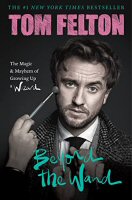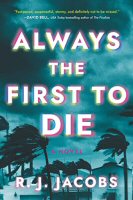by Anthony Horowitz, with audio narration by Rory Kinnear (Compact Disc Horowitz)
After disappointing me a bit with his previous entry in the Hawthorne & Horowitz series, A Line to Kill, Anthony Horowitz returned in terrific form with this fourth installment, The Twist of a Knife. As usual, I listened to this as an audiobook-on-CD, which is narrated by British actor Rory Kinner, and he does a spectacular job.
Once again, this series is one of
the most "meta" fiction series being published. Anthony Horowitz is
not only the author of the novel, but he is also the central character and
narrator. In the first three books in the series, Horowitz was contacted by
abrasive private investigator (and ex-cop) Daniel Hawthorne, who wants to hire
Horowitz to accompany him on a case and write a book about him. This eventually
leads to more of the same, and in the third book, the two men attend a book
festival to promote the release of their first joint adventure.
In this fourth book, Anthony
Horowitz would like to make a break from the taciturn Horowitz, and is happily
participating in the production process of bringing his play, Mind Game,
to the stage. After some successful tryouts in outlying communities, Mind
Game is finally opening in London. But, after a seemingly bravura opening
night, Sunday Times reviewer Harriet Throsby gives it a savage review.
Then, the next morning, she's found dead in her home, with a cheap costume
dagger sticking out of her chest — the dagger Horowitz and all the cast members
received as opening night gifts — and Anthony's fingerprints are all over it.
When the local police seem intent on railroading him for the crime, Horowitz'
only option is to ask Hawthorne for helping in proving his innocence.
This was a funny, suspenseful tale,
filled with quirky theatrical characters, and the relationship between Horowitz
and Hawthorne adds some new layers. The mystery itself is clever — I didn't see
the end coming until just before it was revealed. I would absolutely love to
see this series of novels turned into a series of occasional TV-movies for
British TV and PBS in the U.S. Though I'm sure Anthony Horowitz has no desire
to portray Anthony Horowitz!
The Twist of a Knife is an absolutely terrific
entry in this series...and I'm happy to know that there are more forthcoming!
(If you enjoy this, you may also
wish to try the first three entries in this series — The Word is Murder, The Sentence is Death, and A Line to Kill by Anthony Horowitz, as well as his other
current series featuring Magpie Murders and Moonflower Murders.)
( official Hawthorne & Horowitz page on the official Anthony Horowitz
web site )
Recommended
by Scott C.
Bennett Martin Public Library — Public Service
Have you read or listened to
this one? What did you think? Did you find this review helpful?
New reviews appear every month on the Staff
Recommendations page of the BookGuide website. You can visit that
page to see them all, or watch them appear here in the BookGuide Blog
individually over the course of the entire month. Click the tag for the
reviewer's name to see more of this reviewer’s recommendations!
The print version of Magpie Murders was used as the book for discussion at a Just Desserts meeting in 2021.
If you're a mystery fan, you're invited to join us for this month's Just Desserts meeting tonight, March 30th, at 6:30 p.m. in the 4th floor auditorium of the Bennett Martin Public Library downtown at 14th & "N" St. -- this mystery-themed discussion group meets on the last Thursday of each month, January through October. This month's book assigned topic of discussion is: Science Fiction & Fantasy Murder Mysteries (check that link for a list of potential reads).
Even if you haven't read anything for this specific discussion, you can still participate, and learn about great new mysteries to try! For more information, check out the Just Desserts schedule at https://lincolnlibraries.org/bookguide/book-groups/#justdesserts






























